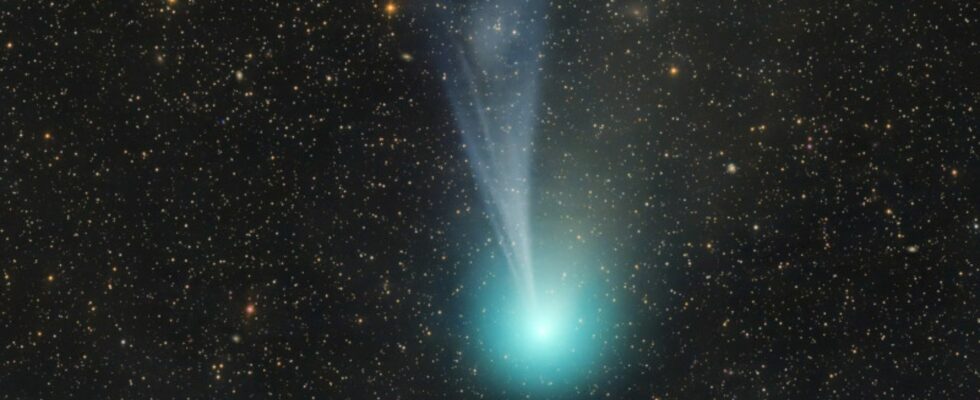A comet observed for centuries seems promising. Nicknamed “devil’s comet”, 12P/Pons-Brooks seems on track to become visible to the naked eye in 2024.
Will the next comet visible to the naked eye in France be the “devil’s comet”? It’s still a little early to say. There is, however, hope with this specimen, whose brightness could make it visible without an instrument in the sky of March or April 2024.
The measurement of the magnitude used to describe the apparent brightness of a star. The brighter the object, the lower its magnitude. The naked eye’s limiting magnitude is 6; that of the full Moon, -12.6.
From its official name 12P/Pons-Brooks, this comet could reach an apparent magnitude of 7.1 up to 5.2 throughout the month of March, indicated BBC Sky at Night on February 19. If the comet’s magnitude changes as this prediction indicates, it would mean that its brightness would be very close to what the naked eye can perceive. The perihelion of the comet, that is to say the moment when it will be closest to the Sun on its trajectory, is planned April 21.
Already, astrophotographers have started to chase this beautiful comet and to publish their images of his greenish hair and his bluish tail.
The Devil’s Comet, observed for centuries by astronomers
Why is it nicknamed “devil’s comet”? In July, 12P/Pons-Brooks expelled a lot of gas and dust, suddenly becoming brighter. This explosion distorted the comet’s hair, with a dark center and two brighter tips, giving the impression that it had horns (like those of a devil). Then, scientists found that this behavior was not so rare for 12P/Pons-Brooks, who has already experienced this kind of episodes.

Comet 12P/Pons-Brooks is well known to astronomers: its first observations date back to the 14th century. The history of this comet is rich. In 1812, the French astronomer Jean-Louis Pons discovered the comet using his telescope in Marseille. Then, in 1883, the American astronomer William Robert Brooks in turn rediscovered the comet. The celestial object therefore took the name of its two discoverers. Further observations by scientists made it possible to make the link between the recent appearances of 12P/Pons-Brooks and observations made in 1385 and 1457, corresponding well to this object.
It is a Halley-type comet, in reference to the most famous of all comets. This category includes comets whose orbital period is between 20 and 200 years. For 12P/Pons-Brooks, this period is approximately 71 years. The comet has therefore already had multiple opportunities to venture into the inner solar system.
It is always very difficult to predict with certainty whether a comet will become clearly visible to the naked eye. They are very unpredictable celestial objects, which can behave in surprising ways as they approach the Sun. After its passage in the terrestrial neighborhood in 2021, comet Leonard disintegrated – a few lucky people were able to see it with their own eyes before this disastrous outcome.
Subscribe for free to Artificielles, our newsletter on AI, designed by AIs, verified by Numerama!
